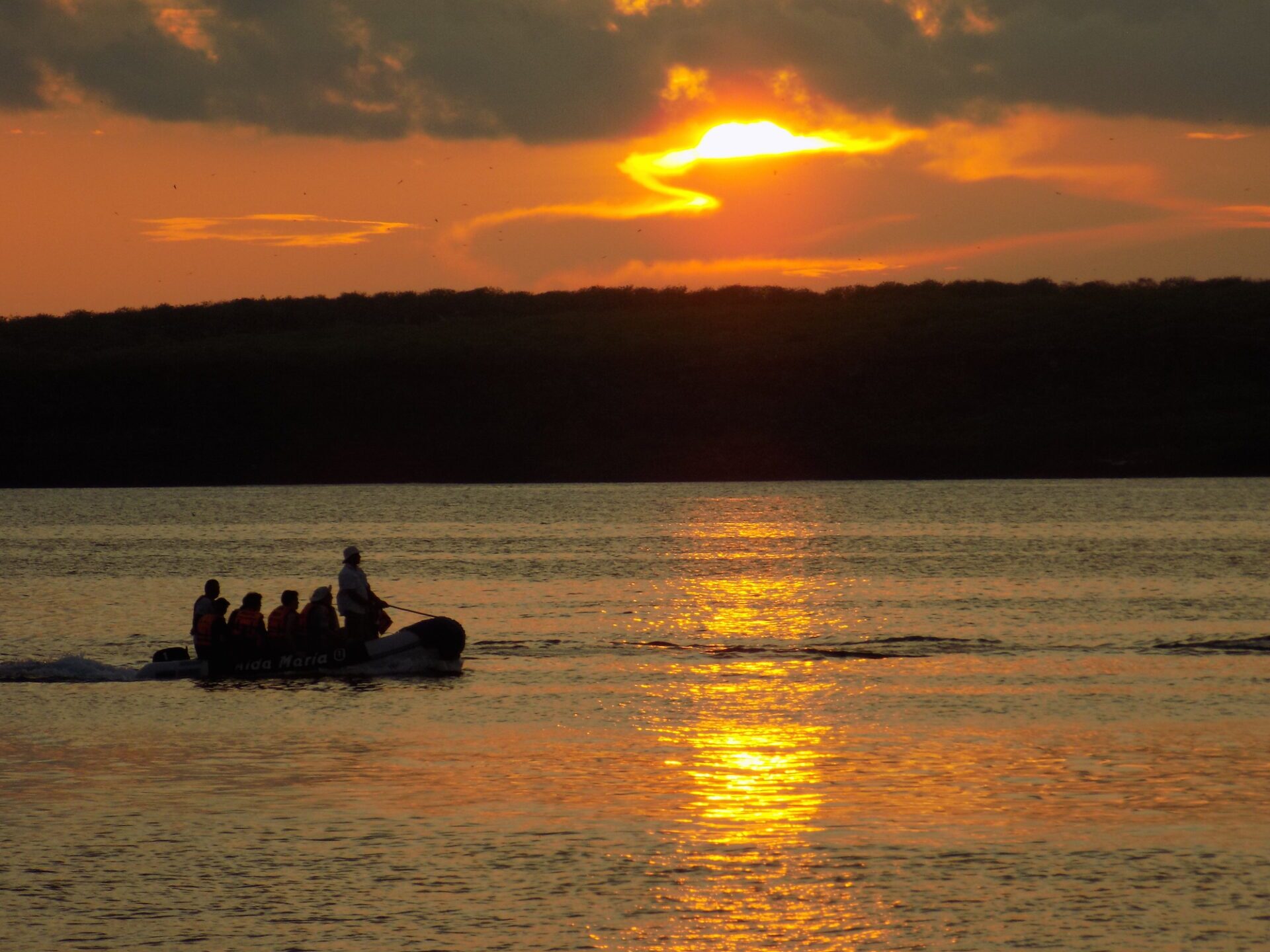Avoid seasickness on Galapagos cruise top tips
 by Tom Shearman on 27th November, 2016
by Tom Shearman on 27th November, 2016

Avoid seasickness on Galapagos Islands
Andean Trails’ Tom and fellow Galapagos expert Doris Welsh share their Top Ten Tips on how to have a fantastic Galapagos holiday while minimising the risk of seasickness.
This advice applies to cruises and hotel-based tours.
Tom writes:
“Many people’s number one fear before a Galapagos cruise is running the holiday by becoming seasick.
“Seasickness is the natural reaction of your body’s inner ear balance system to the unfamiliar motion of the ship, which can cause stress on your balance system.
“It typically goes away on its own after a few days, but if you’ve never experienced seasickness, or have before, it can be daunting and enough to scare you off from booking.
“Don’t let it! Seasickness can affect anyone, but at least for me, the pros far outweigh the risk of becoming seasick.”
Doris’ quick tips
Doris Welsh, who works for the Eric Galapagos boat series, said: “Facing forward on the boat and glancing at the horizon helps manage seasickness as well.
“If you do get sick, don’t be embarrassed, you aren’t the first and you won’t be the last.
“Find the closest trash can or ask a crew member where to go. Don’t try to hold it in – it will only prolong the inevitable.”

Sailing in Galapagos
Top Ten Tips in full
1. Go when the seas are calmer
In January and June, the water tends to be calmer during these months. The seas can be a little rougher between July and December, especially in September and October. That said, the weather in the Galapagos (like pretty much everywhere else) is unpredictable, so it’s best to just be prepared.
2. Get low
Generally speaking, the closer your cabin is to the water the less it will move. If you’re prone to seasickness, consider requesting a cabin on a lower deck, and in the middle of the boat.
3. Get fresh air
Fresh air, a breeze and lack of enclosed spaces, can help out a lot with seasickness. Lay down, close your eyes and listen to some music on the deck and take you mind off feeling sick.
4. Keep the horizon in sight
You want to continually glance at the horizon, keeping it in sight, but not staring at it. As your body adjusts to the new movements, use the horizon as your point of reference. For most people facing forward on the boat vs. to the side helps manage their seasickness.
If you can’t look at the horizon, keep your eyes closed. This will reduce the conflicting signals between your eyes and inner ear.
5. Don’t use binoculars, cameras or read for an extensive length of time
Avoid staring at things that your brain would usually consider stable, this will only make your symptoms worse.
6. Manage your diet and booze
Leading up to your cruise, eat ‘safe’ foods that you know your body can handle. Avoid anything overly spicy, acidic or fatty and try not to overeat or overdo it on the alcohol before you board the boat. Eat lighter meals and add peppermint and ginger to your diet, they are great natural remedies to help reduce the risk of seasickness.
7. Stay out of direct sun
You want to avoid your body overheating, so stay out of direct sunlight and continually sip water to stay hydrated. As you get closer to the equator, the sun gets stronger and if you aren’t keeping liquids in you, dehydration can bring on symptoms of seasickness
8. Avoid strong smells
If you happen to be near a guest that used a bit too much perfume, or near the exhaust from the engine, move so that you avoid all strong smells that can make your nausea worse. This is where the fresh air can help clear up any intense smells that are lingering.
9. Bring medicine
Talk to your doctor before your cruise and come prepared with any medications – follow their recommendations.
Dramamine, Bonine and Benadryl are the most common remedies. If you take them, start 24 hours before the cruise – the medicine is much more effective if it’s already in your bloodstream.
10. Try wristbands
Many people have also had luck using anti-nausea wristbands that press against your acupressure points to reduce motion sickness naturally. Sea-Band and Reliefband are among the favourites.
More information
Galapagos Islands are a once-in-a-lifetime destination, and by following the tips above almost everyone can have great Galapagos holiday.
Been inspired? Have a look at our own Galapagos photos on Facebook and Pinterest, plus our youtube videos.
Doris said: “Usually it takes a few hours, sometimes a day or two, but almost everyone eventually gets their sea legs under them.”
Contact us for more information about Galapagos cruises and hotel-based tours.
Share







